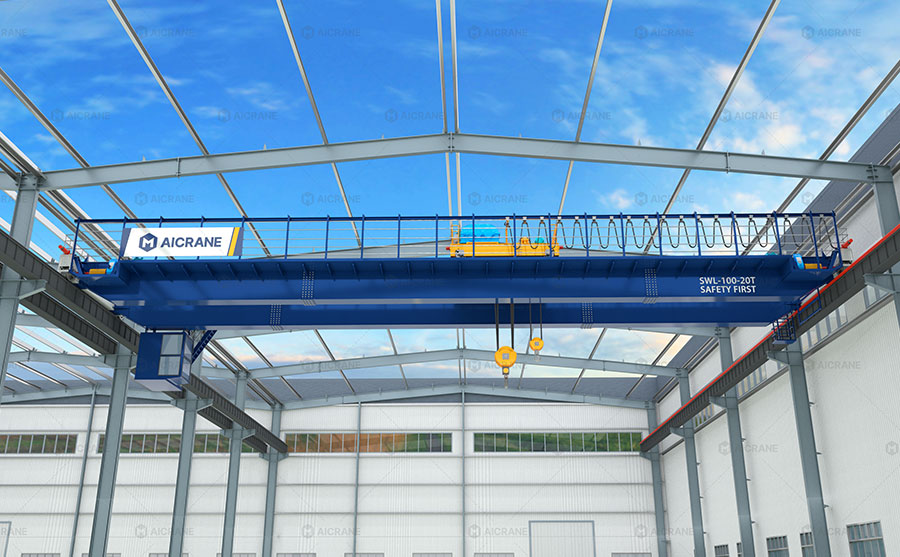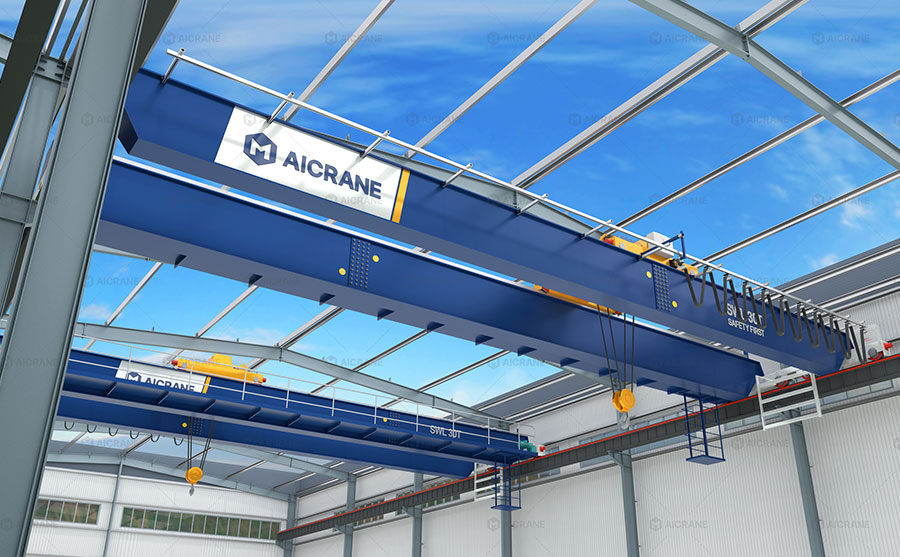Electric Overhead Traveling (EOT) cranes are critical assets for many industrial operations—whether in manufacturing, steel plants, warehouses, or logistics centers. Because an EOT crane is a significant investment and key to daily lifting operations, choosing the right supplier and managing the entire process carefully is crucial.
Unfortunately, many companies encounter common mistakes when working with EOT crane suppliers, which can lead to delays, unexpected costs, operational inefficiencies, or even safety issues. Understanding these pitfalls and how to avoid them can save your project time, money, and headaches.
In this article, we will explore some of the most frequent mistakes customers make when working with EOT crane suppliers and share practical tips to help you avoid them.

1. Not Defining Clear Requirements Before Contacting Suppliers
One of the biggest mistakes customers make is approaching EOT crane suppliers without a clear and detailed set of specifications. This lack of clarity can cause confusion, lead to unsuitable proposals, and force multiple rounds of revisions.
How to avoid:
-
Conduct a thorough needs assessment internally before supplier engagement.
-
Specify key parameters such as lifting capacity, span, lifting height, duty cycle, power supply, control mode, and environmental conditions.
-
Consider any special features you may need, such as explosion proof crane design, radio remote control, or integration with existing equipment.
-
Prepare drawings or layout plans showing where and how the crane will operate.
Clear requirements enable suppliers to provide accurate quotes and tailored solutions that match your operational demands.
2. Choosing Suppliers Based on Price Alone
While budget is always a factor, selecting an EOT overhead crane supplier based solely on the lowest price often leads to disappointment. Low-cost suppliers may cut corners on quality, use inferior components, or lack after-sales support.
How to avoid:
-
Evaluate the supplier’s overall value, including product quality, customization capabilities, certifications, and service reputation.
-
Request references and case studies from the supplier’s past projects.
-
Understand warranty terms and availability of maintenance services.
-
Compare technical specifications and component brands rather than just prices.
Investing in a reputable supplier with a track record of quality and support ensures long-term reliability and reduces total cost of ownership.
3. Neglecting to Verify Supplier Certifications and Compliance
EOT cranes must comply with various national and international standards to ensure safety and performance. A common mistake is failing to verify if the supplier adheres to these regulations.
How to avoid:
-
Ask for relevant certifications such as ISO 9001 quality management, CE marking (for Europe), or other industry-specific approvals.
-
Confirm that the crane design and manufacturing meet local safety standards (e.g., OSHA in the USA, CMAA in the crane industry).
-
Request documentation proving compliance during the tender or negotiation phase.
Buying from certified suppliers protects your company from liability and ensures the crane meets safety requirements.

4. Overlooking After-Sales Service and Spare Parts Support
Many customers focus on the delivery and installation phase but overlook the importance of ongoing support. EOT cranes require regular maintenance and may need quick repairs or spare parts replacements.
How to avoid:
-
Discuss after-sales service options upfront. What kind of technical support does the supplier provide?
-
Confirm availability and lead times for spare parts.
-
Ask if the supplier offers maintenance contracts or training programs for your operators and maintenance staff.
-
Ensure the supplier has a local presence or reliable logistics to minimize downtime.
Good after-sales service is vital to keep your industrial overhead crane running smoothly and extend its service life.
5. Failing to Clarify Delivery and Installation Responsibilities
Sometimes customers assume that the supplier will handle full delivery, installation, and commissioning of the crane, but in reality, responsibilities can vary widely between suppliers.
How to avoid:
-
Clearly define who is responsible for transportation, unloading, assembly, installation, and testing.
-
Ask if the supplier provides on-site installation supervision or online guidance.
-
Verify if additional costs apply for installation services.
-
Ensure that the installation team (whether supplier’s or your own) is qualified and has the necessary tools and equipment.
Avoiding misunderstandings in these areas prevents costly delays and ensures a smooth project handover.
6. Ignoring Lead Times and Project Scheduling
Delays in crane delivery can disrupt your entire production schedule. Some customers underestimate lead times or fail to align procurement timelines with their project schedules.
How to avoid:
-
Get a clear lead time estimate from the supplier as early as possible.
-
Build in buffer time for manufacturing, shipping, customs clearance (if imported), installation, and testing.
-
Communicate your project timeline with the supplier and get written confirmation of delivery milestones.
-
Consider seasonal factors or local holidays that may affect timing.
Proper scheduling coordination reduces the risk of project overruns and cost escalations.
7. Not Conducting Proper Testing and Inspection Before Acceptance
Accepting a crane without thorough testing can result in hidden defects or performance issues that become costly to fix later.
How to avoid:
-
Request a load test and functional testing before final acceptance.
-
Inspect the crane for compliance with agreed specifications and workmanship quality.
-
Verify the operation of safety devices such as limit switches, emergency stops, and overload protection.
-
Insist on proper documentation, including test reports and quality certificates.
Taking the time to verify quality before acceptance protects your investment and confirms the supplier’s accountability.
8. Underestimating the Importance of Operator Training
Even the best crane can pose risks if operated incorrectly. Some customers neglect to arrange proper training for crane operators and maintenance personnel.
How to avoid:
-
Request operator and maintenance training as part of your contract.
-
Verify the supplier’s ability to provide on-site or remote training sessions.
-
Ensure training covers safe operation, troubleshooting, routine maintenance, and emergency procedures.
-
Consider refresher courses to maintain high safety standards.
Well-trained operators improve safety, reduce accidents, and extend crane lifespan.
9. Overlooking Integration with Existing Systems
Modern EOT cranes often need to integrate with other factory systems such as ERP, automation lines, or warehouse management systems. Neglecting this can cause operational inefficiencies.
How to avoid:
-
Discuss your existing system infrastructure with the supplier during early stages.
-
Ask about control system compatibility and communication protocols.
-
Request customized software or hardware interfaces if necessary.
-
Plan for system integration tests before full commissioning.
Proper integration enables seamless workflows and maximizes productivity gains from the crane.
10. Failing to Build a Long-Term Partnership
Viewing your EOT crane supplier as a one-time vendor rather than a long-term partner can limit your future options for upgrades and support.
How to avoid:
-
Choose suppliers who demonstrate commitment to customer relationships.
-
Maintain regular communication after delivery and installation.
-
Provide feedback and work collaboratively on future improvements.
-
Consider suppliers with the capability to upgrade or retrofit cranes as your needs evolve.
A strategic partnership ensures ongoing value and adapts to your business growth.
Conclusion
Working with an EOT crane supplier is a complex but rewarding process. By avoiding these common mistakes – lack of clarity on requirements, focusing only on price, ignoring certifications, overlooking after-sales service, unclear installation roles, poor scheduling, skipping inspections, neglecting training, missing integration needs, and not building partnerships – you can ensure your project is successful, safe, and efficient.
Choosing the right supplier and managing the procurement process carefully means your EOT crane will reliably support your operations for years to come.
If you want expert help in selecting, purchasing, or maintaining EOT cranes, contact us today for professional advice tailored to your specific industry and requirements.